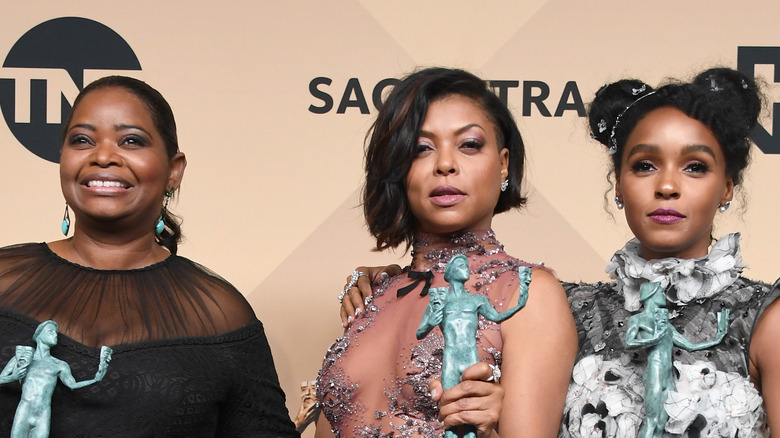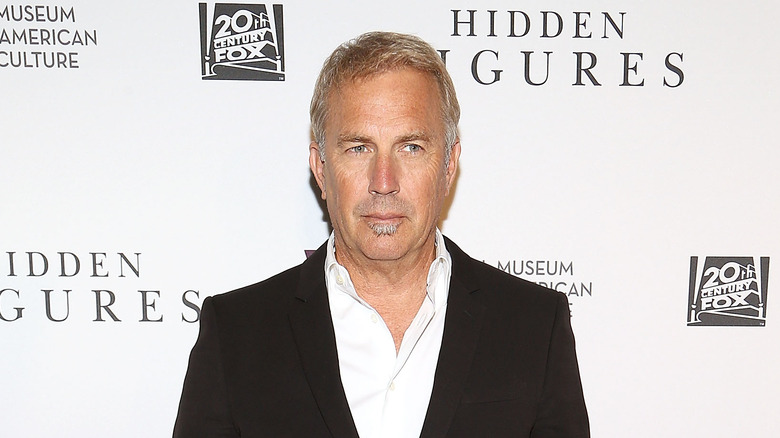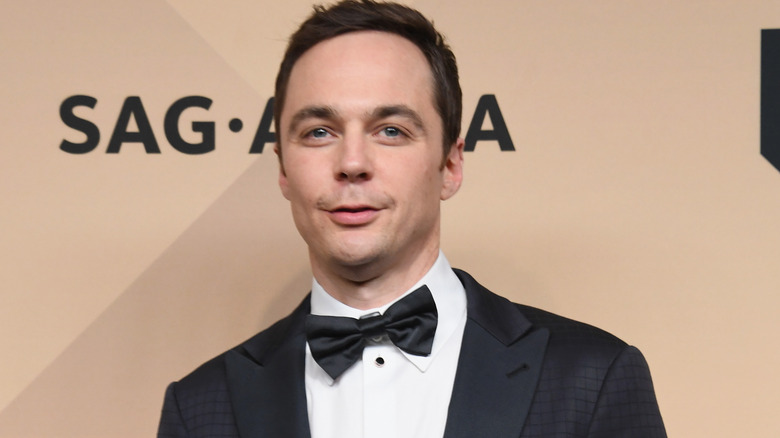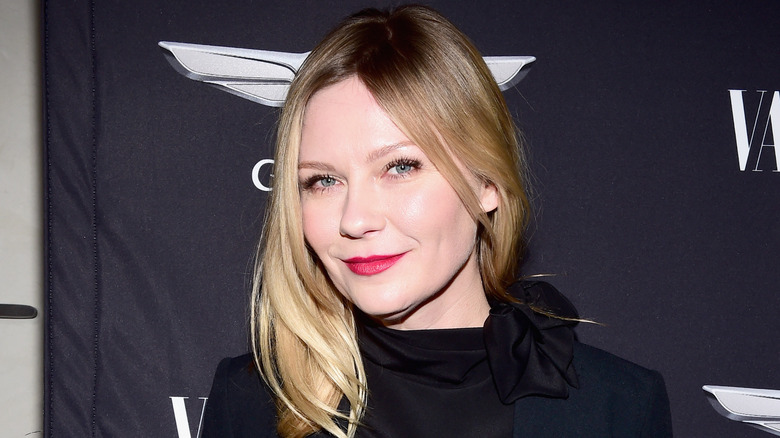Main Characters From Hidden Figures That Didn't Exist In Real Life
The historical drama film "Hidden Figures" was released in 2017, and it followed the story of three Black women working at NASA's Langley Research Center ahead of the launching of John Glenn into space, per IMDb. Portraying former NASA mathematicians Mary Jackson, Dorothy Vaughan, and Katherine Jackson were actresses Janelle Monae, Octavia Spencer, and Taraji P. Henson, respectively. The movie was mostly based on a 2016 book of the same name by author Margot Lee Shetterly. But like many book-to-film adaptations, there were several differences between the two.
Shetterly's book brought to light the story of Black women who worked at a racially segregated NASA location in Virginia during the creation of the space program. These women were called human computers, via History. But prior to Shetterly's book, much of their stories were untold (via Space). When it got to the big screen, the film explored their journeys as well as the trials and tribulations that happened before and during their time at NASA. As with any major Hollywood production, there was a drama factor for audiences. Even though the film was based on a true story, the dramatics needed came with the creation of a few fictional characters.
The character of Al Harrison
In "Hidden Figures," the main characters are Johnson, Vaughan, and Jackson, with a focus on Johnson's story in particular. Other major characters, who portray the mostly white staff at NASA, have a significant role in the movie. Actor Kevin Costner plays Al Harrison, a supervisor who heads the Space Task Group that Katherine Johnson worked with. In the movie, he ends bathroom segregation (posted on YouTube) and gives Johnson access to meetings she was initially shut out of.
However, these scenes were fictionalized. As was his character. According to NASA, there was no man named Al Harrison who directed that division. The timeline of when Johnson worked there shows that she worked under the direction of Robert C. Gilruth, on whom the filmmakers mostly based the character. However, because the task group consistently saw different managerial heads, the movie's creators decided to combine several of them to create the composite character that Costner played.
The character of Paul Stafford
In "Hidden Figures," one of the main people Johnson has to work with is a man named Paul Stafford, played by actor Jim Parsons. He, too, is a composite character. Stafford didn't exist, but per NASA, his character is a combination of five men Johnson would work with throughout her time in the Space Task Group. She did, however, mostly work with a NASA engineer named Ted Skopinski early on in her employment at the agency.
It's unclear which of the five men Stafford's character is mostly based on, but his character's attitude and interaction with Johnson emphasizes that the white male engineers she worked with weren't always welcoming. Parsons' character is cold toward her and takes credit for reports she contributed to, as in one instance he makes Johnson remove her name as co-author. Most of all, he was displeased that Johnson was hired to check his math. Of course, his attitude toward her changes near the end of the film, in which it shows him happily allowing Johnson to leave her name as co-author. In real life, Katherine Johnson did indeed co-author with Ted Skopinski in 1960, which definitely demonstrates some truth to her challenges.
The character of Vivian Mitchell
Another portrayal in the movie that plays a prominent role is Kirsten Dunst's character Vivian Mitchell. Unlike the characters of Al Harrison and Paul Stafford, Mitchell is not a composite character. There's no name that comes up in search of whom she could've been. Essentially, she never really existed at all, according to NASA. The filmmakers wanted to create a character that symbolized white women in supervising positions. In "Hidden Figures," Mitchell has several curt interactions with Johnson and Dorothy Vaughan. For the most part, she doesn't seem very kind to either, as she is very strict. Apparently, this was the attitude of some white women working in management during segregation.
When Vaughan got to NASA, which was originally NACA, she was making waves long before it became the federal agency. In 1949, she became the first Black supervisor (per NASA) and joined the small number of women in supervising positions. There were two white women who preceded her, but NASA maintains Mitchell's character is based on neither of them.



